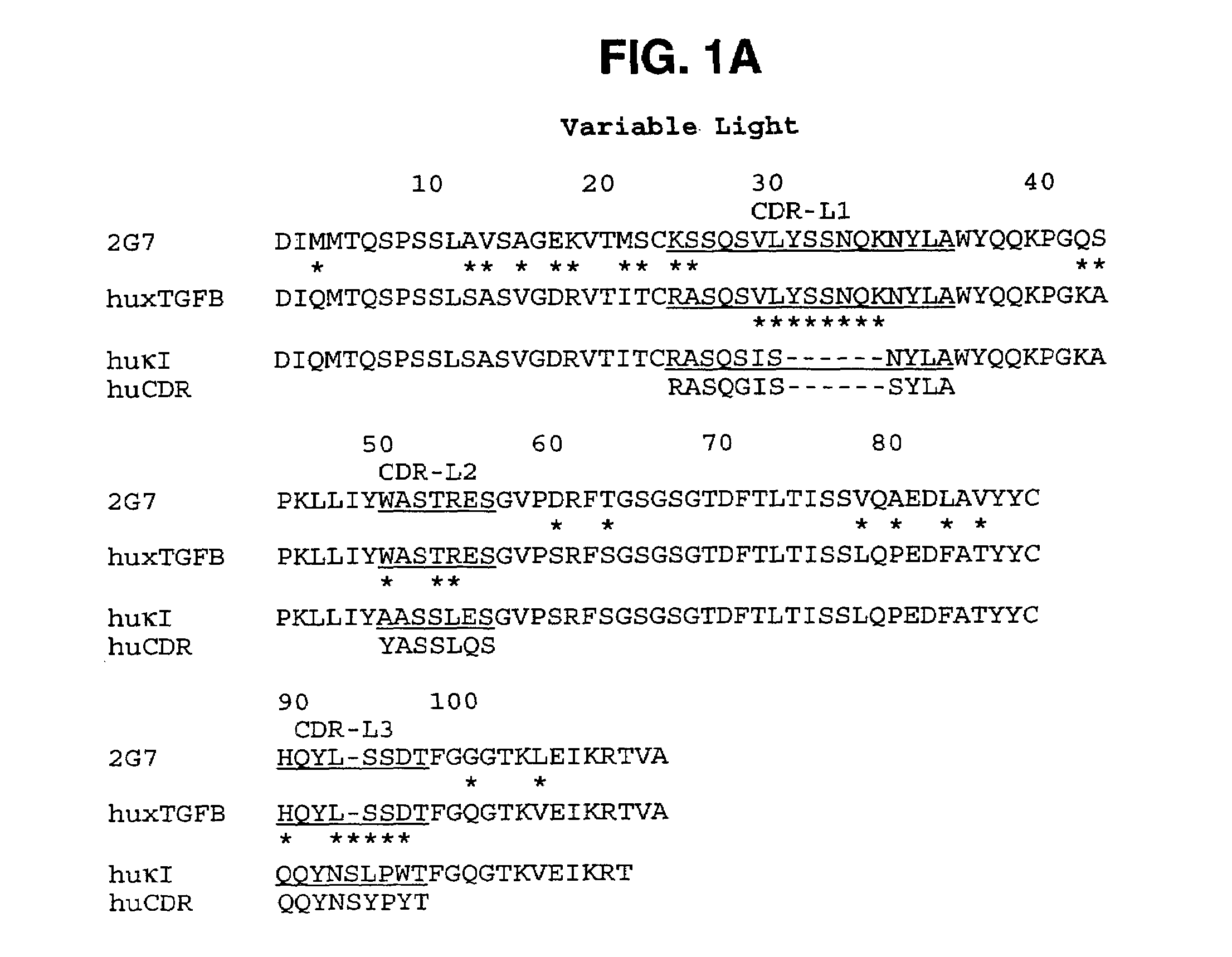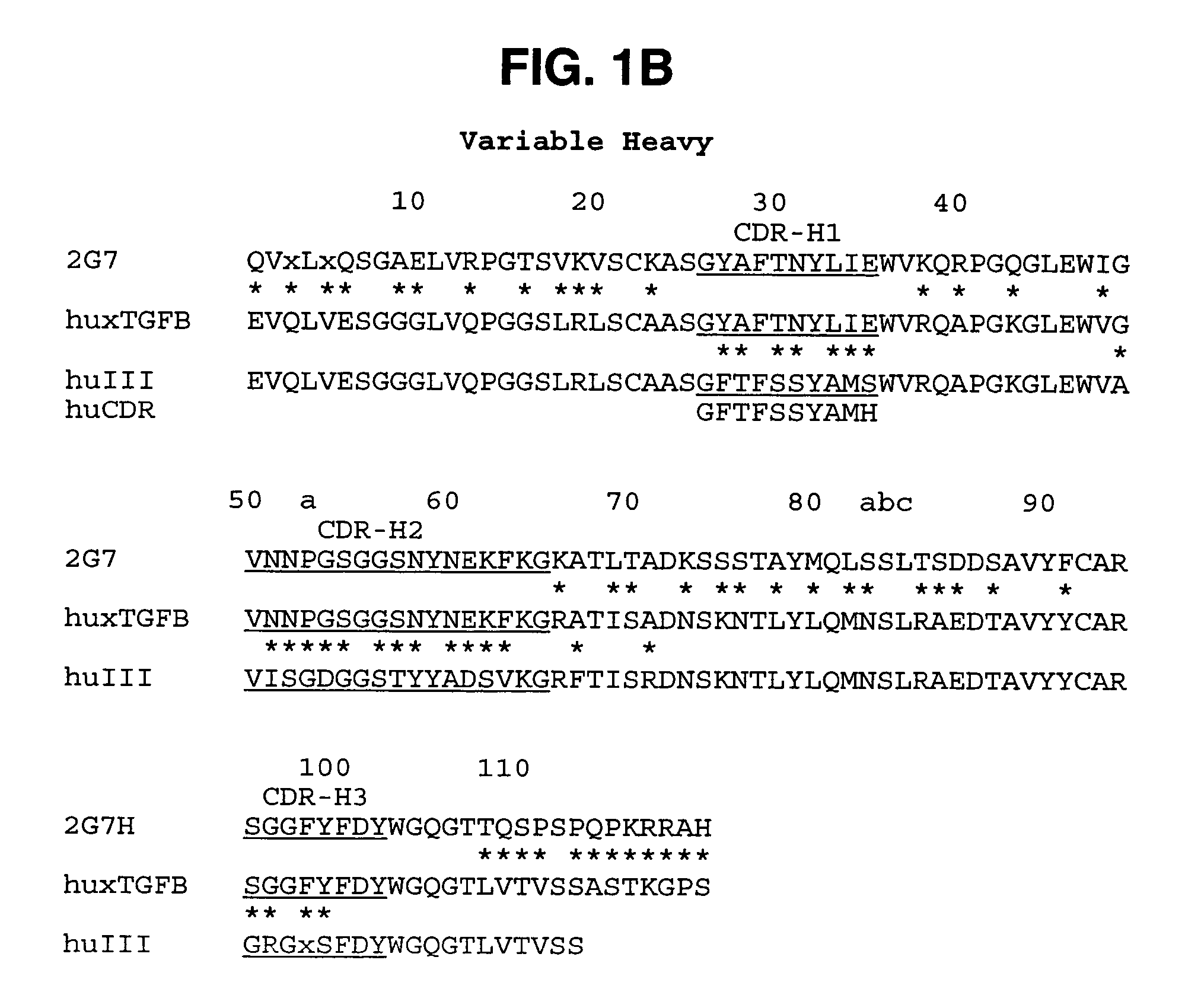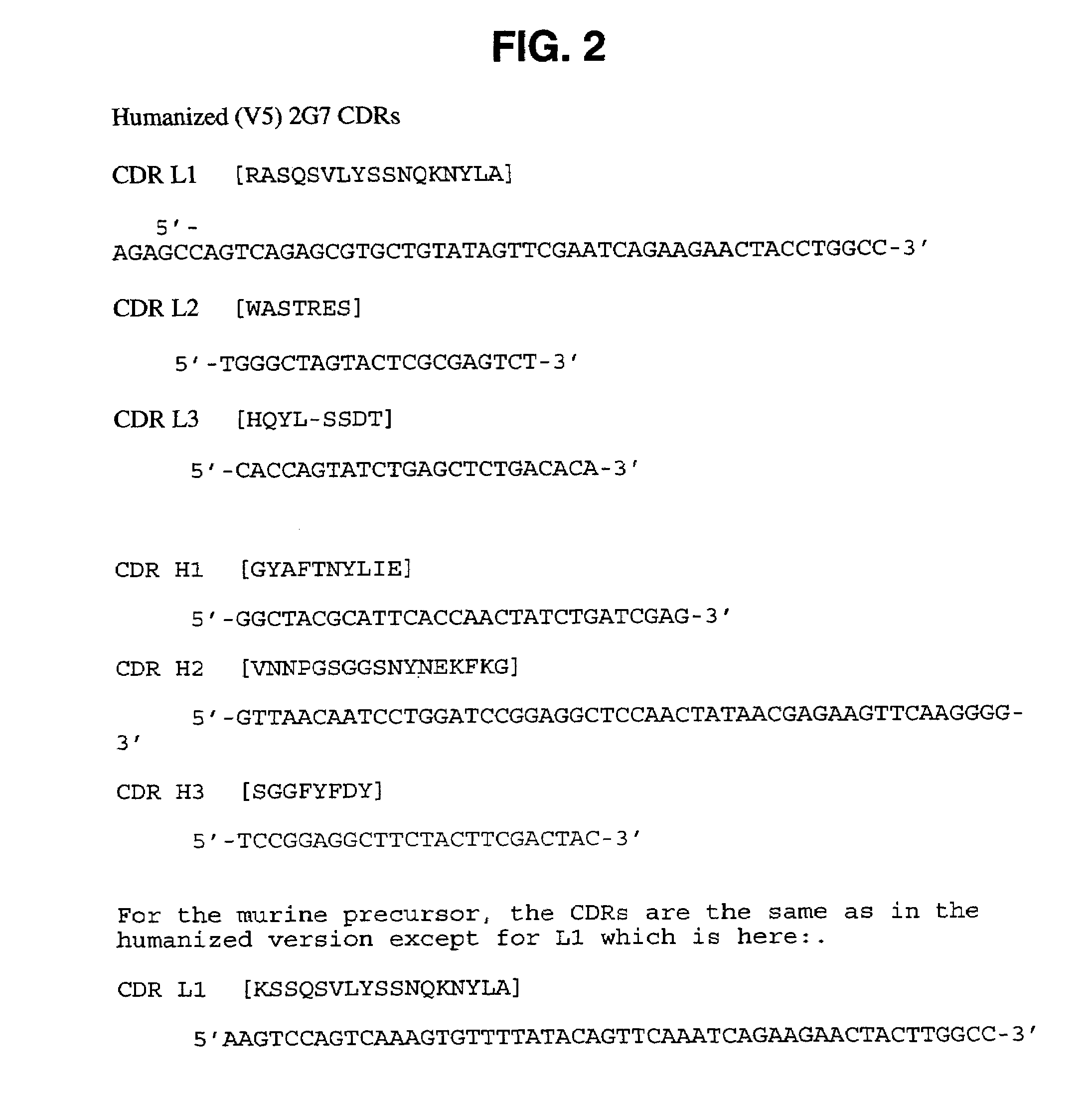Humanized anti-TGF-beta antibodies
a technology of humanized antitgfbeta and antibodies, which is applied in the field of humanized antitgfbeta antibodies, can solve the problems of mass cell mortality, accelerate disease progression, and inhibit vitro angiogenesis
- Summary
- Abstract
- Description
- Claims
- Application Information
AI Technical Summary
Benefits of technology
Problems solved by technology
Method used
Image
Examples
example 1
Production and Characterization of Monoclonal Antibodies 2G7 and 4A11
A. Assay Procedures
I. ELISA Determination
[0310]96-Well polystyrene assay plates were coated with 100 μl / well of purified TGF-beta1 at 1 μg / ml in pH 9.6 carbonate buffer for 18 hours at 4° C. Coated plates were blocked with 0.5% bovine serum albumin (BSA) in PBS (called BPBS) for one hour at 22° C., washed with 0.05% TWEEN 20TM surfactant in FBS (called PBST), and incubated with 100 μl of hybridoma supernatants for one hour at 22° C. Plates were washed with PBST, and bound antibodies were detected with a goat anti-mouse IgG conjugated with peroxidase (Tago, Burlingame, Calif.). The plates were washed with PBST, and o-phenylenediamine dihydrochloride substrate was added at 100 μl / well. The reaction was stopped after 15 minutes and the optical density at 492 nm was determined on a UVMAX™ plate reader (Molecular Devices, Palo Alto, Calif.).
II. Iodination of rTGF-beta1
[0311]Purified TGF-beta1 was iodinated by a modified...
example 2
Humanized 2G7 Antibodies
[0330]The variable domains of murine monoclonal antibody 2G7 were first cloned into a vector that allows production of a mouse / human chimeric Fab fragment. Total RNA was isolated from the hybridoma cells using a STRAGENE™ RNA extraction kit following manufacturer's protocols. The variable domains were amplified by RT-PCR, gel purified, and inserted into a derivative of a pUC119-based plasmid containing a human kappa constant domain and human CH1 domain as previously described (Carter et al,. Proc. Natl. Acad. Sci. (USA), 89: 4285 (1992) and U.S. Pat. No. 5,821,337). The resultant plasmid was transformed into E. coli strain 16C9 for expression of the Fab fragment. Growth of cultures, induction of protein expression, and purification of Fab fragment were as previously described (Werther et al,. J. Immunol., 157: 4986-4995 (1996); Presta et al., Cancer Research, 57: 4593-4599 (1997)).
[0331]DNA sequencing of the chimeric clone allowed identification of the CDR re...
example 3
Therapy of Relapsed or Refractory Prostate Cancer
[0348]The antibody herein is a full-length, humanized monoclonal antibody (produced in CHO cells) directed against TGF-beta. It is indicated as a single agent for treatment of hormone-refractory (androgen-independent) prostate cancer patients. Primary endpoints for efficacy include overall survival compared to best available care (Mitoxantrone / Prednisone), when used as a single agent, and safety. Secondary efficacy endpoints include: time-to-disease progression, response rate, quality of life, pain and / or duration of response. The antibody is administered intravenously (IV) weekly or every three weeks at 2 or 4 mg / kg, respectively, until disease progression. The antibody is supplied as a multi-dose liquid formulation (20-mL fill at a concentration of 20mg / mL or higher concentration).
[0349]The antibody is also indicated in combination with chemotherapy for treatment of hormone-refractory (androgen-independent) prostate cancer patients....
PUM
| Property | Measurement | Unit |
|---|---|---|
| concentration | aaaaa | aaaaa |
| pH | aaaaa | aaaaa |
| pH | aaaaa | aaaaa |
Abstract
Description
Claims
Application Information
 Login to View More
Login to View More - R&D
- Intellectual Property
- Life Sciences
- Materials
- Tech Scout
- Unparalleled Data Quality
- Higher Quality Content
- 60% Fewer Hallucinations
Browse by: Latest US Patents, China's latest patents, Technical Efficacy Thesaurus, Application Domain, Technology Topic, Popular Technical Reports.
© 2025 PatSnap. All rights reserved.Legal|Privacy policy|Modern Slavery Act Transparency Statement|Sitemap|About US| Contact US: help@patsnap.com



